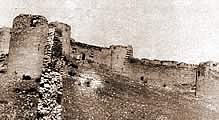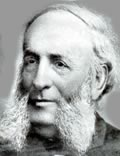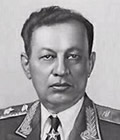Glossary (Ashot II – Bagharan)
Ashot II
Also called Ashot Erkat (Iron), King of Armenia (914-928). He came to the Armenian throne in the period of anarchy and civil strife. Supported by Byzantine Emperor Constantine Pophyrogenitus, Ashot II waged non-stop wars against the Arab invaders and the revolted Armenian lords. He died in 928 and was succeeded by his brother Abas.
Ashot III
Also called Merciful, King of Armenia (953-977), son and successor of Abas I. He fortified the walls of Ani and made it his capital. During his reign, a large number of churches, monasteries and alms-houses were built in Armenia.
Ashot Bagratuni, Sparapet
Nephew of King Sembat I and cousin of Ashot Erkat. He became Sparapet of Armenia in 903. In 910-913, he betrayed Sembat I and joined Sembat’s enemy Youssuf, governor of caliph in Atrpatakan. After the death of Sembat I, he proclaimed himself King of Armenia. He ruled in the city of Bagharan, in constant hostilities with Ashot II.
Ashtishat
Located in the western part of historical Taron province of Armenia (now Derik village in Turkey), Ashtishat was a large pagan center with many beautiful temples. After the Christianization of Armenia in the early 4th century, the temples were destroyed and a renowned monastery was built instead.
Askeran
 Mairaberd (Mother Forteress), built in 1788 south of Askeran, 14 km from Stepanakert, was an important stronghold of Artsakh.
Mairaberd (Mother Forteress), built in 1788 south of Askeran, 14 km from Stepanakert, was an important stronghold of Artsakh.
Region in today’s Nagorno-Karabakh Republic, approximately corresponding to the ancient Khachen and Varanda principalities of Artsakh.
Asoghik
(Stephanos Taronetsi), Armenian historian of 11th century, author of renowned Universal History.
Avarayr
Located in Artaz canton of Vaspurakan province of the Greater Armenia (now in Turkey), Avarayr place made history as battlefield of the first known war for the Christian faith. In 451, the Armenians under Vardan Mamikonian, though lost the famous battle against the Persians, won a great moral victory and remained loyal to Christianity.
Azokh
Village in Hadrout region of Artsakh (Nagorno-Karabakh Republic). The area is encircled with a range of crags, with grottos and caves, of which the most famous is the cave of Azokh. The excavations made in the 1960s revealed several settlements of the Stone Age period, and the remains of a Neanderthal man.
Ayrarat
One of 15 historical provinces or ashkhars (worlds) of the Greater Armenia, Ayrarat consisted of 20 cantons: Basen, Abeghyank, Gabeghyank, Havnunik, Arsharunik, Bagrevand, Tsaghkotn, Vanand, Shirak, Aragatsotn, Tchakatk, Masiatsotn, Kogovit, Nig, Kotayk, Mazaz, Varazhjnunik, Vostan, Ourts and Arats.
Aivazovsky, Ivan
 Ivan Aivazovsky
Ivan Aivazovsky
(Hovhannes Aivazian) (1817-1900) Great Armenian Russian painter of seascapes, native of Feodosia, Russia. He became member of Academy of Fine Arts in 1887. He painted some 6000 works.
Babajanian, Hamazasp
 Hamazasp Babajanian
Hamazasp Babajanian
(1906-1977) Prominent Armenian Soviet commander, Marshal of armored units of the USSR.
Babajanian, Arno
 Arno Babajanian
Arno Babajanian
(1921-1983) Soviet Armenian composer and pianist, People’s Artist of the Armenian SSR (1956) and Soviet Union (1971).
Bagarat Bagratuni
Armenian prince, ruler of Armenia in 826-855. The Arabs granted him the title of Prince of Princes. However, his independent policy led to his arrest, in 850, which in its turn, caused a number of anti-Arab uprisings in Armenia.
Bagharan
City in ancient Armenia (today’s Bakran village in eastern Turkey). The kings of Bagratuni dynasty made it their religious center. When King Sembat I moved his court to Erazghavors, Bagharan became possession of the Armenian Sparapets. The city was famous for many beautiful churches and the royal family burial-vault.







